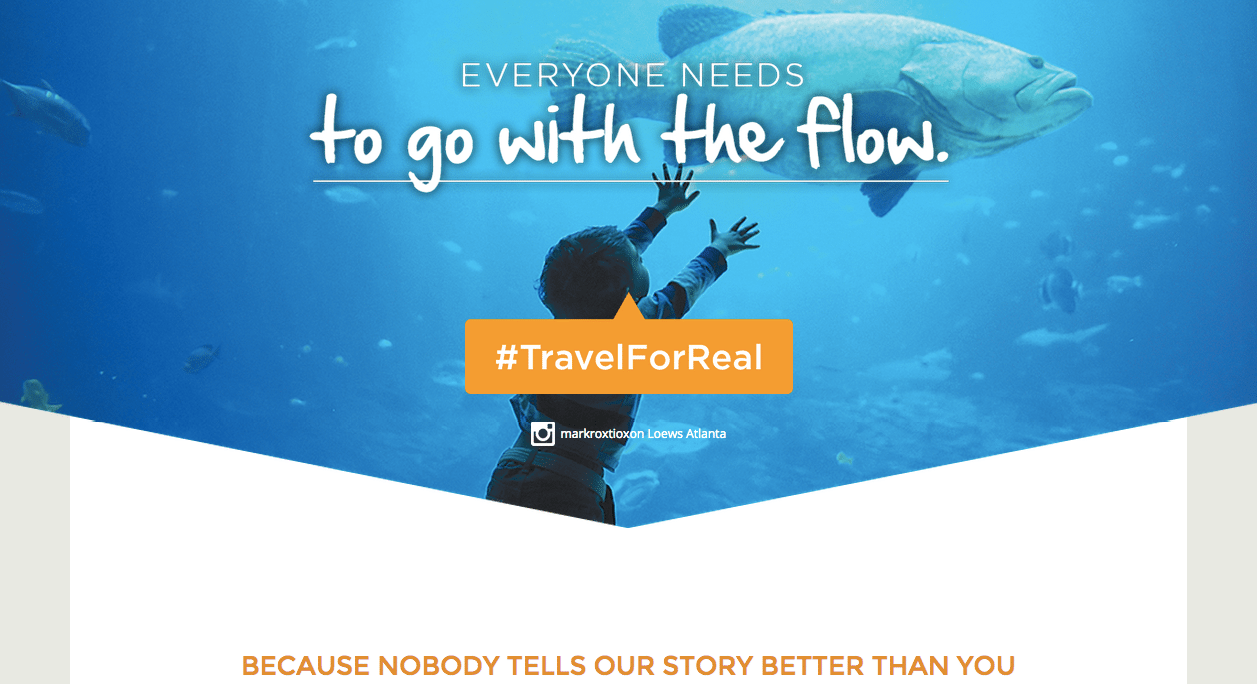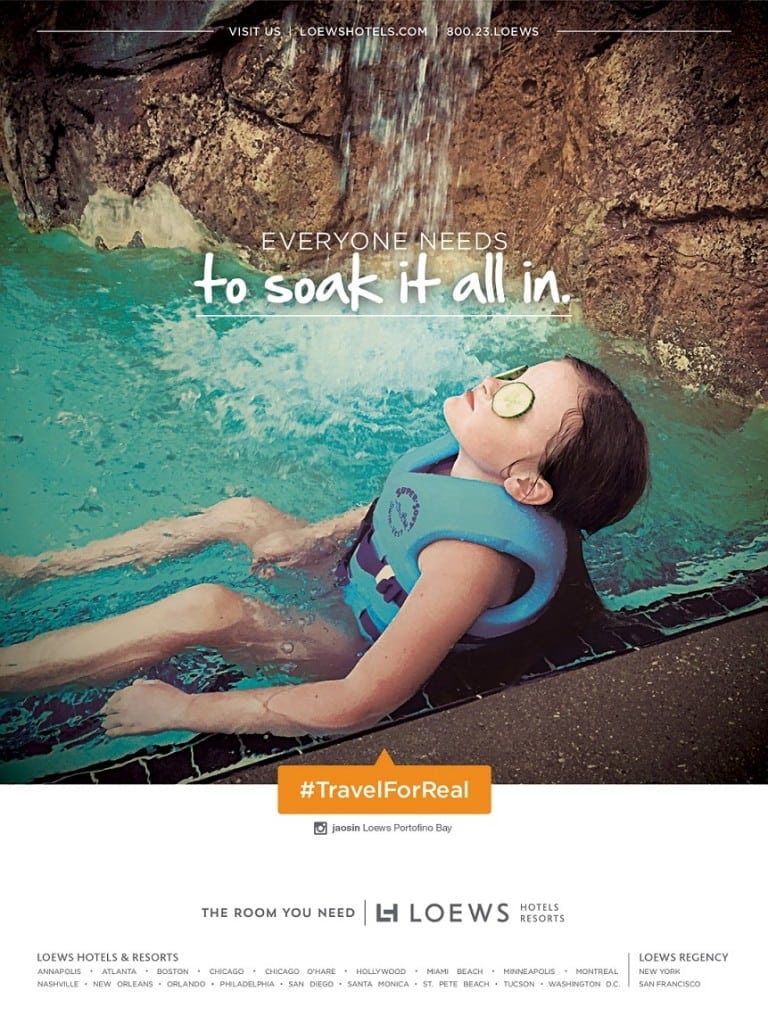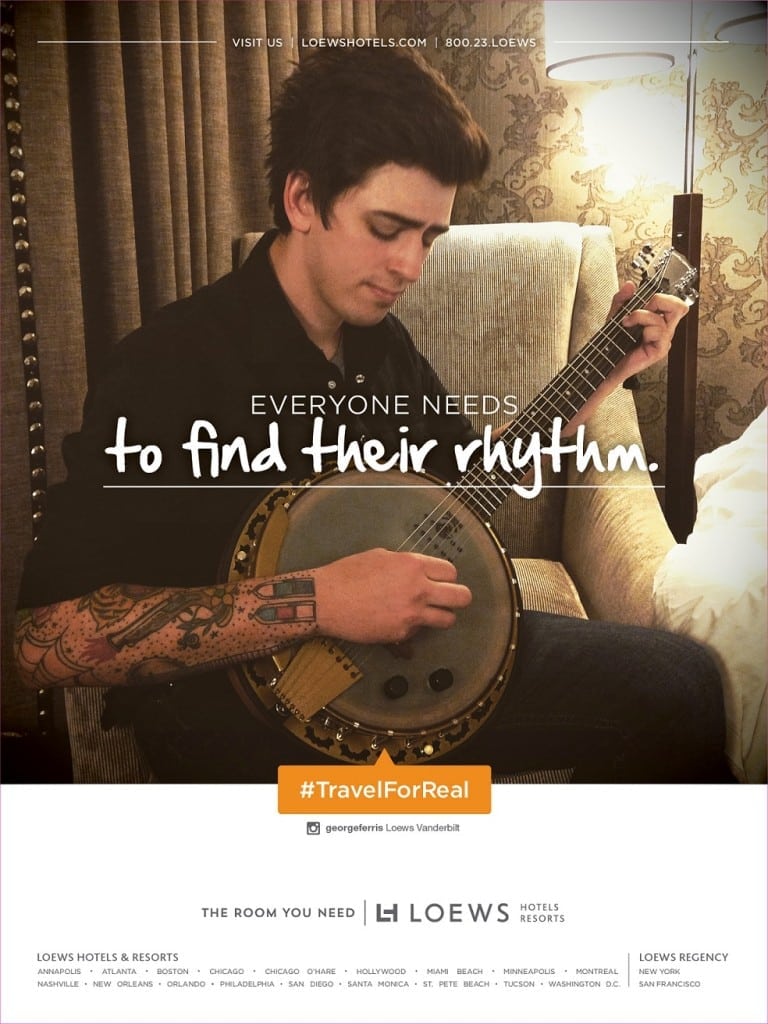Skift Take
The integration of user-generated content into campaigns reassigns creative control from composing and capturing images to identifying real-life stories.
As lifestyle hotels sprout, older luxury brands strive to breathe new life into their marketing campaigns to stay relevant.
Not only do hotel brands need to revamp their rooms and perfume their common areas to exude a contemporary feel, they also need to meet the evolving needs and appeal to the tastes of guests wherever they are. For Loews Hotels and Resorts, that ‘where’ is on Instagram.
In 2013, Loews launched a more traditional campaign around the theme, the “Room You Need.”
“Before the ‘Room You Need’ campaign launch, I could take every lodging’s marketing campaign, blow it up and put it on the wall, and I could remove the logos and interchange them,” said Bruce Himelstein, chief marketing officer at Loews Hotels. “So, there’s the lady with the stones on her back at the spa and there’s the couple by the pool with the umbrella with their drinks at the resort. It’s a sea of sameness and [we asked ourselves] how do you break through that stuff.”
There is truth to what he’s saying. The glossiness of typical scenes styled and shot at hotel properties are ubiquitous. And, these types of hotel and resorts ads don’t help break up the monotony.
Loews and its agency, Catch New York, saw this as an opportunity to create a social-first advertising campaign. Loews used select Instagram photos snapped by guests on-property — culled from 38,000 images that mentioned or hashtagged Loews — as the basis for its print and digital ads. Loews added messaging, “Everyone Needs ______” and a call-to-action overlay that included the hashtag #TravelForReal. The Loews logo and city locations appear near the bottom of the ads.
These ads look like enlarged Instagram and Facebook posts that encourage people to share their photos with a hashtag to enter a user-generated-content-based contest to be featured or rewarded with freebies. And, they aren’t far from that formula, minus any contest. Loews tagged the images #TravelForReal, curated them into a microsite that encourages guests to share their images under a slogan, “Because Nobody Tells Our Story Better Than You.”
“We’ve seen enough data that says, when individuals see themselves through their own images that lots of exciting things happen,” Himelstein said. “The ad gets more animated when it’s not staged. Quite frankly they [our customers’ photos] were better than the ads we were doing. They were more real and more authentic.”
In addition to the source of the images and their relatable appeal, the creative connects the Loews brand with satisfied guests by way of visual reviews. When looking at a traditional ad, it’s one-sided, brand-sided. When looking at these ads, they give the customer’s perspective.
There were 171 tweets, according to Topsy, and 213 Instagram posts reported by Iconosquare that were hashtagged #TravelForReal since the campaign’s launch on June 24. The most engaging topic from these social media conversations revolved around how cool Loews’ campaign turned out rather than the guest experience itself.
It remains to be seen whether this advertising style or approach will become a trend because it is cost-effective, visually appealing and authentic, but it is clear that it will become increasingly complex for brands alone to define themselves because of the proliferation of guests’ social photo-sharing.
The Daily Newsletter
Our daily coverage of the global travel industry. Written by editors and analysts from across Skift’s brands.
Have a confidential tip for Skift? Get in touch
Tags: hotels, instagram, loews hotels, social media
Photo credit: Loews Hotels and Resorts' microsite of user-generated content from its latest campaign, #TravelForReal. Loews Hotels


